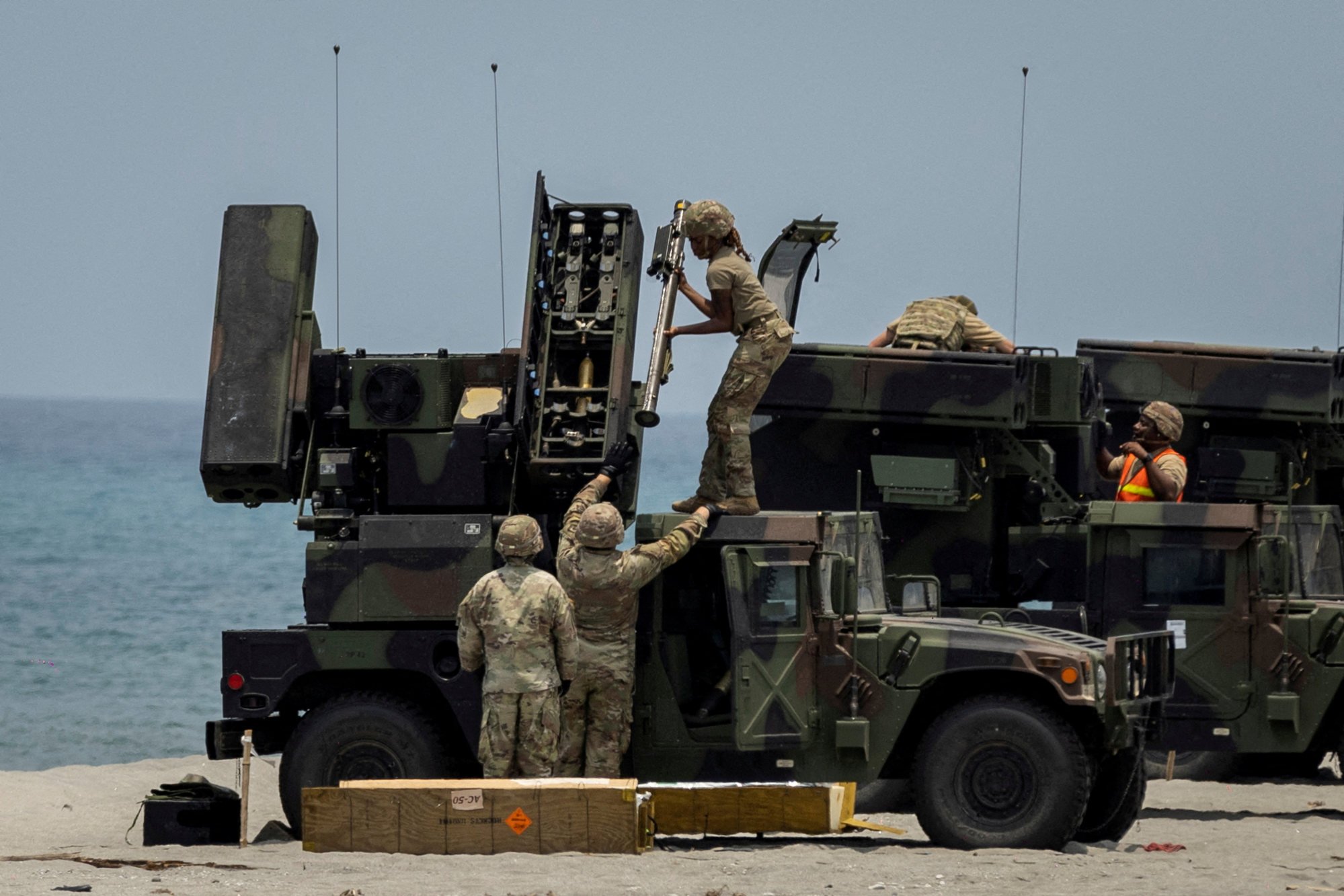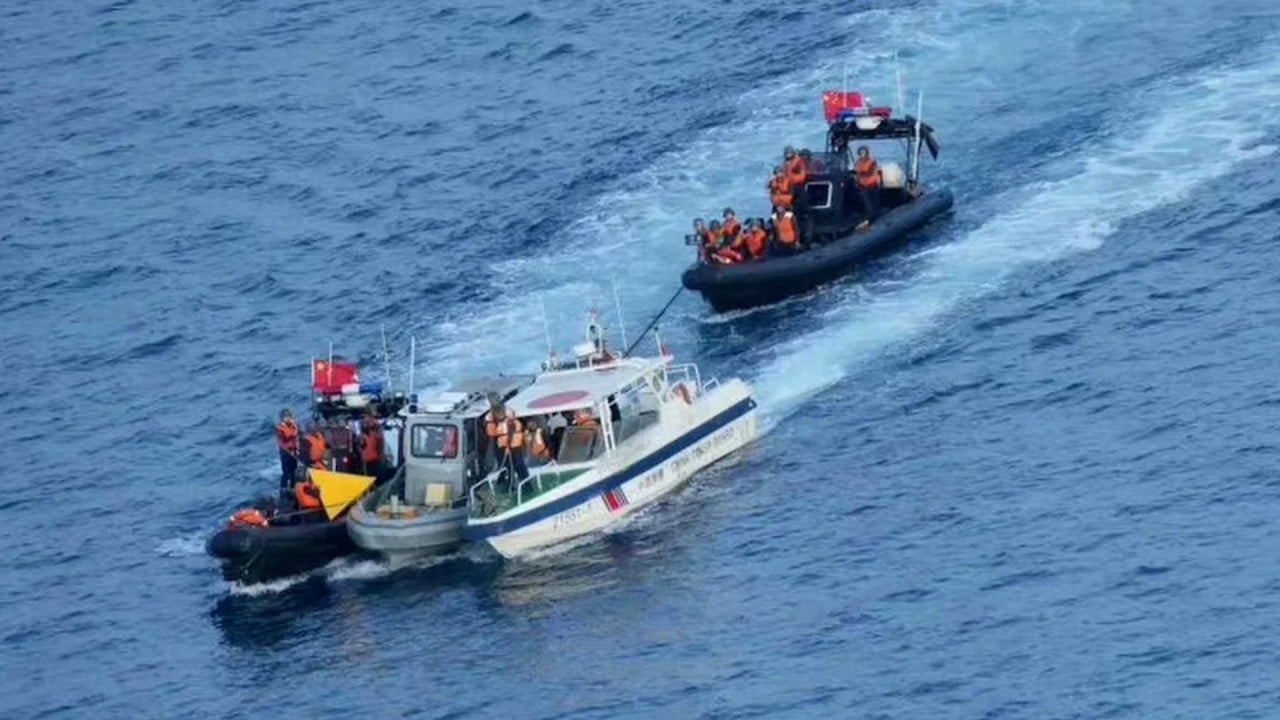Just weeks after one of the most violent incidents between the Philippines and China, high-level diplomats from both sides met in Manila to de-escalate rising tensions. The ninth round of the bilateral consultation mechanism was a welcome respite, given a string of close calls in contested waters. Although expectations remain low, the talks put a momentary pause on an otherwise dangerous downward turn between the two countries.
Since its first meeting in 2017, the consultation mechanism has been a regular channel for handling maritime disputes. The meetings occurred frequently until the Covid-19 pandemic, but no high-level visits have followed Philippine President Ferdinand Marcos Jnr’s trip to Beijing in January 2023.
Last year, a consultation mechanism meeting was convened a month after the Philippine coastguard alleged its Chinese counterpart had pointed a military-grade laser that temporarily blinded some of the former’s crew. In the months following, a stand-off and a collision occurred in the Second Thomas Shoal.
In September, the Philippine coastguard removed a floating barrier put up by the Chinese coastguard in the Scarborough Shoal that blocked access by Filipino fishers. In November and December, Manila said the Chinese coastguard employed water cannons against Filipino supply ships bound for the Second Thomas Shoal.
The lack of timely diplomatic intervention allowed the maritime tiff to fester and poison overall ties. Talking does not resolve everything, but not talking can make it worse. The lack of high-level exchange comes amid a legislative probe of previous arrangements to soothe tensions allegedly reached during the Duterte administration. Such crucifixion of dispute management, coupled with low mutual trust and the absence of effective hotline communications, set the stage for more dangerous clashes.
To arrest further deterioration of the situation, Philippine foreign affairs undersecretary Maria Theresa Lazaro and Chinese foreign vice-minister Chen Xiaodong met in Manila on July 2. They discussed improving maritime communication mechanisms and promoting dialogue between their coastguards, including possibly resuming a joint coastguard committee set up during the Duterte administration.

The meeting came amid calls for greater diplomacy to stave off conflict. In a rare display, 33 Filipino-Chinese business groups issued a statement in support of de-escalation, appealing to both governments to “consider paths that will safeguard the peace, order and safety of both countries and its peoples”. They called for the establishment of a “neutral and diplomatic venue for discussion that will uphold mutual respect for one another”.
China remains the Philippines’ largest trade partner and a major investor. But tensions have affected economic ties. Chinese infrastructure investment, tourism and capital flows to the Philippines have declined to the benefit of other Southeast Asian countries. Failure to offset lost opportunities may put the Philippines behind the region in areas where cooperation with China is critical.
Importantly, the brazen incidents at sea have occurred in spite of Philippine deterrence. Manila has given the United States military access to four additional sites across the country and allowed Washington to deploy the American Typhon mid-range missile system on its soil, including in northern Luzon close to Taiwan. The US and Philippines also undertook more joint military exercises in the South China Sea. At the Shangri-La Dialogue in Singapore, Marcos said the death of a Filipino citizen by “a wilful act” would be “very close to what we define as an act of war”, thus potentially triggering the 1951 Mutual Defence Treaty with the US.
Chinese research and naval ships have been spotted in the country’s eastern and southwestern waters during combined drills with the US and other partners. In clashes in March and April, there were either recorded injuries to sailors or damage to ships.
On June 17, a Filipino sailor in the Second Thomas Shoal lost a thumb in an altercation that broke out when the Chinese coastguard intercepted a Philippine resupply run to BRP Sierra Madre, a stranded navy vessel that serves as an outpost in the disputed area. Manila has accused the Chinese side of damaging equipment worth 60 million pesos (US$1.02 million).
The encounter occurred right after China instituted a controversial measure to arrest and detain foreign nationals “trespassing” in its claimed waters. The prospect of another aggressive episode may have added urgency to bilateral talks.
The ninth bilateral consultation mechanism also came after not only Chinese but also Russian objections to US missile deployment in the Philippines. After Washington placed the Typhon mid-range missile systems in Denmark and the Philippines, Moscow called for production of more intermediate-range nuclear-capable missiles. Beijing criticised the missile installation in a meeting between Chinese and American defence chiefs on the sidelines of the Shangri-la Dialogue.

Parallels can be drawn between the reaction to the Typhon missile presence in the Philippines and the Cuban missile crisis, which brought the world to the brink of nuclear war. The Soviet Union’s decision to place nuclear missiles in Cuba was a response to the US placing Jupiter missiles in Turkey the year before.
For Cuba, the Soviet missiles were meant to deter a US invasion. Similarly, deterring China was among the arguments raised in favour of stationing the US missile system in northern Luzon.
Fortunately, negotiations led Moscow to withdraw its missiles from the island, as well as for the US to withdraw its Jupiter missiles from Italy and Turkey. Despite the breakthrough, Cuba has been subjected to one of the world’s longest embargoes. This shows the fallout for countries caught between great power competition.
Manila said the US missiles would be pulled out by September. Whether the bilateral consultation mechanism played a part in such withdrawal is unknown, but any dialogue to manage tensions, stabilise relations and contribute to peace should be welcomed.
Lucio Blanco Pitlo III is a research fellow at the Asia-Pacific Pathways to Progress Foundation



